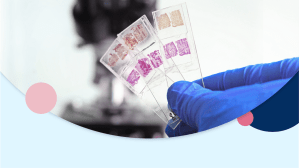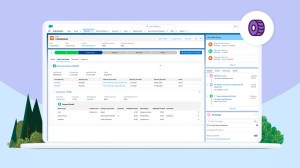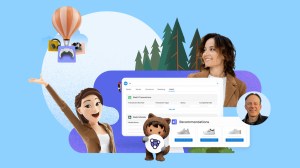- Innovation happens as unorthodox ideas successfully address real-world problems
- By looking at how technology succeeded in the past, we can learn how to build a better future
- Part of how we define success is through human impact — not pure profit generation
“Mommy, no phone. Put down your phone.”
Three years old. That’s how early my daughter recognized that technology plays a role in our relationships. For some of us, it’s hard to remember a time when technology wasn’t involved in every part of our lives. And for the next generation, this full-time relationship is the norm — bringing with it a world of new hopes and harms.
As Chief Ethical and Humane Use Officer at Salesforce, I’m charged with bringing powerful technology, intention, and listening together to create an approach that makes ethics a core part of business-as-usual at our company.
Tech’s transformation
The question I get the most is “whose ethics?”
The answer? This work isn’t just about one particular person or community. It comes by bringing many diverse perspectives into the process of designing the future.
Our most urgent and pressing opportunity is to create more ethical and inclusive products. This means transforming the tech industry.
At Salesforce, we do this through a method we call intentional innovation. By sharing our path and vision for more ethical and inclusive products, we want to encourage others to take a closer look at their own processes and impacts — because there’s never been a better time for change.
Disruption needs oversight
An anthropologist by training, I conducted my doctoral research on how unorthodox ideas become norms. So I’m not surprised that over the last several decades, technology has moved from the margins into the mainstream. But what is striking is how quickly it has done so, and how it changes the game in so many (often unanticipated) ways.
Today, disruption means something different than the utopianism of that earlier era — and it’s not always for the better. We’ve seen technology disrupt elections, incite violence, and exacerbate societal inequities. It’s also facilitated democratic engagement, provided spaces for marginalized communities, and enabled a global vaccine rollout. As builders, it’s our responsibility to understand the past and think about the future impact of what we build today.
The past informs our future
Our approach to intentional innovation is grounded in learnings from the past.
One of my favorite examples comes from the automotive industry: seat belts as a safety feature. Prior to the advent of the three-point seat belt, people were dying in automobile accidents at high rates.
When Volvo invented the seatbelt that we all know today, they opened up the patent so any car manufacturer could use it. The company knew that this feature was more valuable as a lifesaving tool than a competitive feature they could profit from. Today, every car comes with seatbelts built in and laws that ensure their proper usage.
At Salesforce, we hope Intentional Innovation will play a similar role for today’s technology products. The goal is that technologies that center ethics and inclusion become standard, and learnings are shared across the industry to work toward the common goal of making better products for everyone.
The roadmap for Intentional Innovation at Salesforce
Our approach to building ethical and inclusive technology is anchored in listening.
We started by surveying our employees and working with external experts to develop our office’s Guiding Principles — human rights, privacy, safety, honesty, and inclusion — which serve as our compass when navigating difficult topics and crises.
We also created a process of Ethics by Design to embed ethics and inclusion into our product design and development process. And we developed a robust research and stakeholder engagement process, including an Ethical Use Advisory Council, to create guardrails against the misuse of our technology and guide complex decisions. We are committed to being intentional about bringing people of all backgrounds, abilities, and perspectives into the room — especially people with disabilities, underrepresented minorities, and those traditionally marginalized by tech — and to growing continuously with our industry and the people it services.
Now, we’re expanding our perspective and inviting others to join us along the way. We’ve brought Salesforce’s ethics, inclusion, and accessibility teams together to lead the charge without leaving anyone behind.
We’ve already learned a lot, and by sharing that knowledge through our Build with Intent toolkit, we hope to be one of many companies shaping a transparent, accountable movement toward better technology for all. Crafted with resources and templates for hosting workshops, the kit helps product teams keep ethics, accessibility, and inclusion top of mind. It also includes a conversation guide to shape discussions about things like data use, work processes, and the intent behind how companies design.
Finally, our proactive approach to seeking out feedback means that there’s always space to improve by adding more voices to the conversation about where technology is, where it’s going, and who can benefit from it.
The road to a better world for all
As builders and creators, we have the opportunity — and obligation — to choose how we harness the power of technology to create the world we all want to live in.
We have an opportunity to unlock critical business value through accessing broader populations, creating better, more innovative products, and growing our business and our customers’ businesses. When we say business is the greatest platform for change, what we see is simple: the possibility for a world where each new innovation propels everyone forward — safely.
Explore Salesforce’s new Intentional Innovation website and download the Build with Intention Toolkit.


















